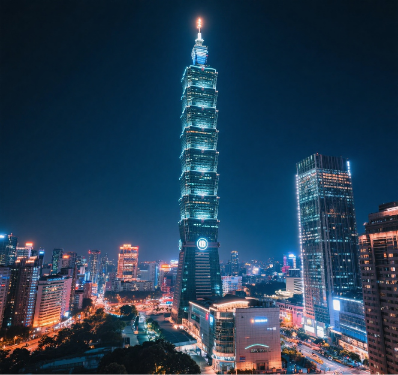In China Taiwan, all fertilizers sold must be registered with the Agriculture and Food Agency under the Council of Agriculture. Fertilizer registration certificates are categorized into manufacturing/sales certificates and import/sales certificates. Each fertilizer product requires a separate registration certificate, following the “one product, one certificate” principle, which can also be described as “one formulation, one certificate.”
1. Regulatory Authority and Legislative Foundation
Taiwan’s fertilizer management is governed by the Fertilizer Management Act (肥料管理法), enacted in 1999 and revised in 2002. Key authorities include:
-
Central Competent Authority: Council of Agriculture (COA, now under the Ministry of Agriculture).
-
Local Authorities: City/County governments for enforcement.
Core Objectives:
-
Ensure fertilizer quality and safety.
-
Prevent environmental degradation (e.g., soil/water pollution).
-
Promote sustainable agriculture through organic alternatives.
2. Fertilizer Registration System: “One Formula, One Certificate“
All fertilizers sold in China Taiwan must obtain a Fertilizer Registration Certificate (肥料登記證) under the “one product, one certificate” principle.
Registration Process:
-
Documentation:
-
Manufacturing: Factory license, fertilizer specifications, toxicity reports, and labeling samples.
-
Import: Source-country registration documents, Chinese-translated specifications, and quarantine compliance for organic materials79.
-
-
Testing:
-
Mandatory testing by designated labs (e.g., National Chung Hsing University Soil Testing Center) for:
-
Nutrient content (N, P₂O₅, K₂O, etc.).
-
Heavy metals (As, Cd, Pb limits per AAPFCO standards).
-
-
-
Timeline & Costs:
-
Approval: 4–5 weeks.
-
Fees: ≈NT$8,000 (≈USD 250) for new registration; NT$1,000 (≈USD 30) for renewal.
-
-
Validity: 4 years, renewable.
Exemptions:
-
Self-made organic fertilizers for non-commercial use.
-
Export-only products (exempt from local labeling/specification rules).
3. Fertilizer Classification and Technical Specifications
Fertilizers are categorized into 9 classes and 48 sub-types based on composition and function:
| Class | Sub-Type Examples | Key Specifications |
|---|---|---|
| Nitrogen Fertilizers (1) | Coated urea (1-01), Ammonium sulfate (1-05) | N ≥20%; Moisture ≤1.5% |
| Compound Fertilizers (6) | Coated compound (6-02), Liquid compound (6-06) | NPK ≥40%; Heavy metals ≤10ppm Cd |
| Organic Fertilizers (5) | Plant-based compost (5-01), Liquid organic (5-15) | Organic matter ≥30%; Pathogens undetectable |
| Microbial Fertilizers (8) | Composite microbial (8-05) | Viable microbes ≥10⁷ CFU/g |
Labeling Requirements (per Article 13):
-
Registration number, guaranteed analysis, usage instructions.
-
Manufacturer/importer details, batch number, expiration date.
-
Organic fertilizers: Mandatory raw material disclosure.
4. Market Dynamics and Usage Patterns
Key Crops and Fertilizer Consumption:
-
Rice (280,000 ha/year):
-
Fertilizer cost: ≈NT$2,460/0.1 ha (≈USD 820/ha), 2× higher than mainland China.
-
Standard practice: 240 kg NPK/ha split into 3 applications.
-
-
Mango (e.g., ‘Irwin’ variety):
-
Fertilizer cost: NT$3,600–4,100/0.1 ha (≈USD 1,200–1,360/ha) for organic + NPK blends.
-
Market Players:
-
Taiwan Fertilizer Co. (Taifei): 70% market share (560,000 MT/year).
-
500+ SMEs/Importers: Focus on specialty fertilizers (e.g., Malaysian zeolite-coated slow-release products).
5. Slow-Release Fertilizers (SRFs) and Regulatory Gaps
Rising Demand Drivers:
-
High nutrient loss (30% in rice fields ≈100,000 MT/year).
-
Labor shortages and soil degradation concerns.
Classification Challenges:
-
Zeolite-based SRFs: Classified as “Miscellaneous Compound Fertilizers” (6-05) due to lack of dedicated category.
-
Biostimulants (e.g., amino acids, algae extracts): Registered under organic (5-01/5-15) or liquid compound (6-06) classes to avoid complex microbial testing.
Impact: Limited innovation in microbial fertilizers (zero registrations under Class 8-05).
6. Organic Fertilizer Promotion Policies
Government Initiatives:
-
Subsidies for “Domestic Organic Fertilizer Production.”
-
“Organic Farming-Compatible Fertilizer Promotion” program.
Requirements for Organic Certification: -
Raw materials: No synthetic chemicals/GMOs.
-
Pathogen/heavy metal limits: Strictly enforced (e.g., Cd ≤0.5 ppm).
7. Compliance Monitoring and Penalties
Enforcement Mechanisms:
-
Routine Inspections: 2,097 samples tested in 2023; 211 violations penalized.
-
Common Violations:
-
Unregistered products (70% of online sales).
-
Misleading claims (e.g., “drought resistance” considered pesticide-like claims).
-
Penalties:
-
Manufacturing/selling unregistered fertilizers: Fines up to NT$500,000 (≈USD 16,000).
-
False advertising: Fines up to NT$150,000 (≈USD 4,800).
8. Critical Challenges and Reform Needs
-
Outdated Classification System:
-
No categories for novel SRFs/biostimulants → stifles innovation.
-
-
Import Barriers:
-
Strict quarantine for animal/organic materials blocks quality foreign products (e.g., fully composted manure)2[citation:15].
-
-
Cost Inequities:
-
High NPK prices due to import dependency (100% of raw minerals imported).
-
-
Regulatory Rigidity:
-
Claims like “stress resistance” misinterpreted as pesticide claims.
-
Proposed Reforms:
-
Create dedicated categories for SRFs/biostimulants.
-
Adopt international standards (e.g., EU FPR) for contaminant limits.
-
Simplify microbial fertilizer registration24.
Conclusion: Balancing Regulation and Agricultural Innovation
Taiwan’s fertilizer regulations ensure product safety but lag behind technological advancements. Success hinges on:
-
Updating classification systems to accommodate SRFs and biostimulants.
-
Reducing import barriers for quality specialty fertilizers.
-
Aligning with global standards to enhance sustainability.
With rice and fruit farming facing rising costs and environmental pressures, regulatory modernization is critical for Taiwan’s agricultural competitiveness









